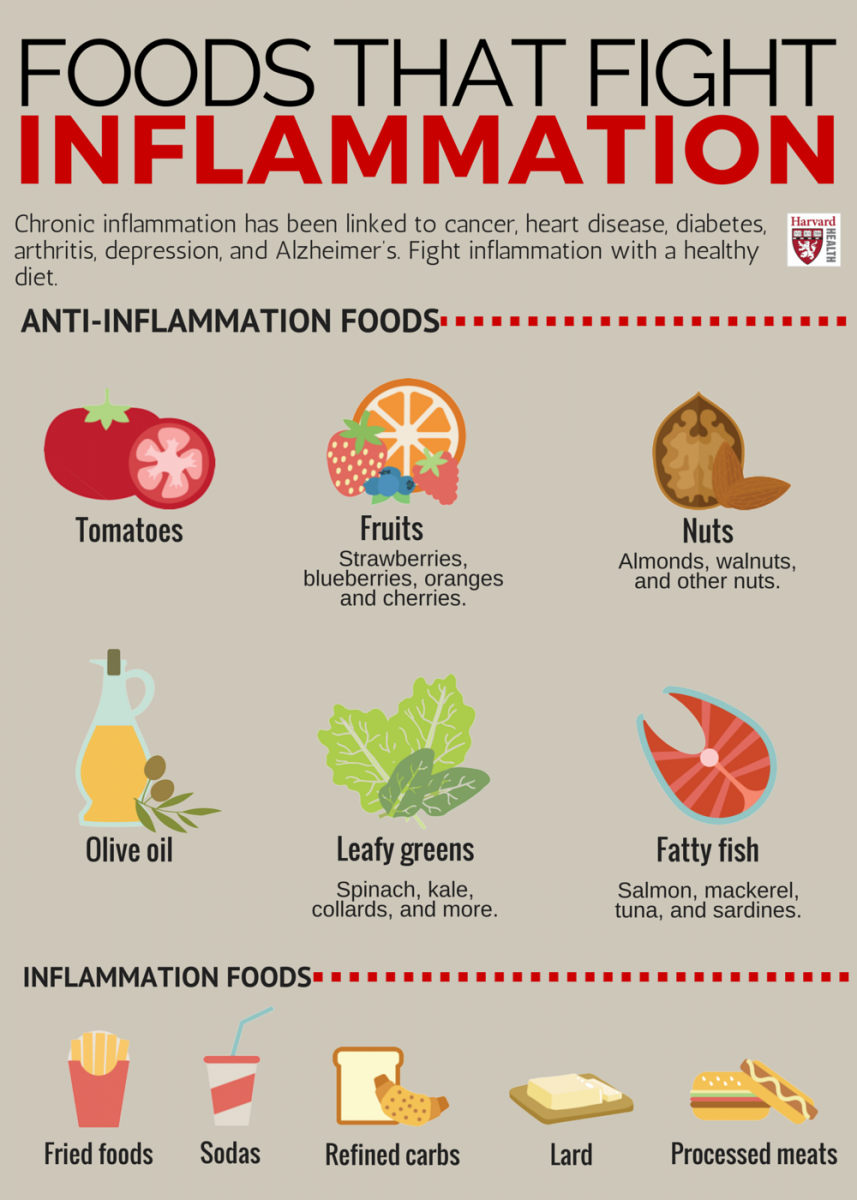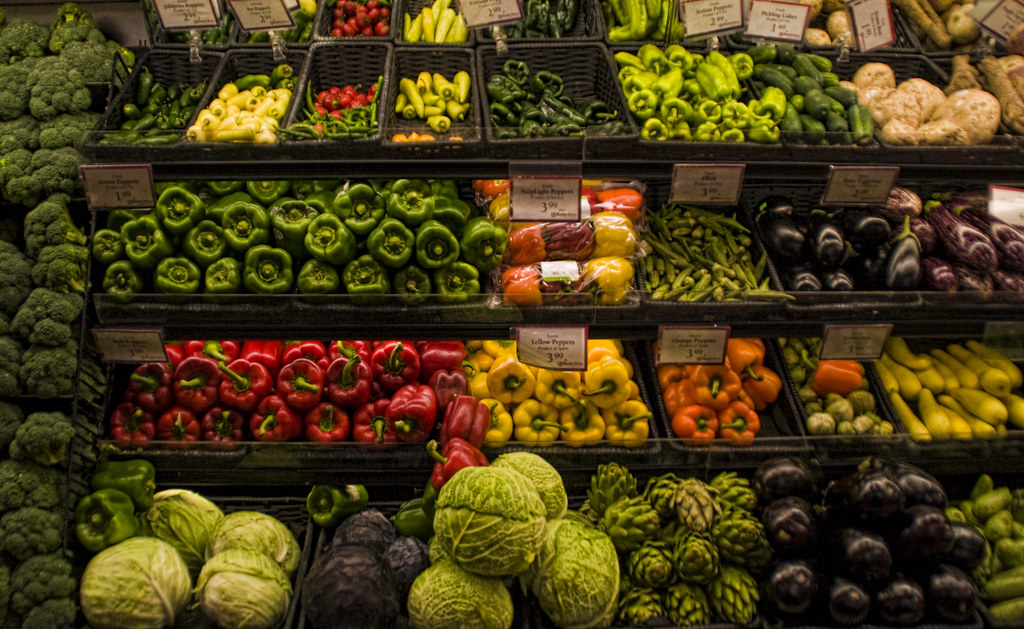By Anita Nall Richesson, Olympian & Nutritionist
 You’ve probably heard me mention the word inflammation before or heard it from some other source since it’s a buzz word in the health and wellness industry lately. Let’s take a look at inflammation again from the ground up.
You’ve probably heard me mention the word inflammation before or heard it from some other source since it’s a buzz word in the health and wellness industry lately. Let’s take a look at inflammation again from the ground up.
What is inflammation?
- Normal: When white blood cells attack foreign invaders in order to protect you (like when you get a cut on your hand)
- Chronic: When the immune system shifts out of balance and causes a more chronic smoldering type fire inside of you contributing to disease.
Why should I care about it? Chronic inflammation is the main cause for the chronic diseases of aging as well as the number one contributor to obesity in America. As an athlete, it contributes to chronic injury, reduced recovery time and overall decreased performance. For example, it’s hard to be on you’re “A game” if you are dealing with chronic migraine headaches, eczema or frequent gastrointestinal issues. Dr. Mark Hyman, a leading authority on inflammation says that “we are seeing an epidemic of inflammatory diseases. In fact nearly every modern disease — everything from autoimmune diseases, heart disease, and cancer to obesity, diabetes, and dementia — is caused by inflammation!”
What should I do about chronic inflammation? The first step is to understand it and then take new actions in your life to reduce it. The main area, in which we have control over, that contributes dramatically to your inflammation is diet and lifestyle. Your daily diet probably plays the biggest role in either contributing to or fighting off chronic inflammation. An anti-inflammatory diet is highly suggested by many expert doctors. It could play the biggest role in your health AND performance.
What is an anti inflammatory diet? It is a way of eating where the majority of your calories come from healing foods that decrease the body’s levels of inflammation. This includes foods like fish, bone broth, berries, leafy greens, coconut, nuts & seeds. It excludes modern day convenience foods like cereals, puffed or popped, bagged or boxed foods and high sugar foods like soda, candy and pastries.
What else can I do to reduce my inflammation? While we can’t control the quality of air we breathe outside, there are a few things you can do to control your indoor air, which will ultimately help reduce your inflammation along with your food choices. Green plants, like Lady Palm, Rubber Plant & Philodendron, that cleanse indoor air pollution are great to put in your home.
The cleaning products you choose to use in the home can also impact inflammation dramatically. It’s not a secret that almost all conventional household cleaners contain some toxic ingredients, many are suspected carcinogens. Here is a list of what to avoid: Chlorine bleach, ammonia, formaldehyde, hydrochloric acid and nitrobenzene. There are tons of natural cleaners on the market to choose from. The slight extra cost is worth your family’s health. Vinegar is also a super cheap and effective natural cleaner.
Anything else about inflammation? Yes! Increase good sleep and reduce stress. Sleep is when the body repairs itself after a long day of work. We need plenty of it and it needs to be restful. The use of Lavender Essential Oil is very helpful for quality rest along with Chamomile. These essential oils help reduce stress as well. Get a small spray bottle and fill it with filtered water along with a few drops of each oil. Spray around and on your bed for a great nights sleep. This is great for athletes to help them rest and recover better as well.
I am passionate about helping the body recover from hard work and reducing inflammation because it’s the thing that took me out of elite level performance at an early age. The younger you pay attention to reducing your inflammation, the better you’ll feel and the higher your chances are for sustained success.
Anita Nall Richesson Biography
Olympian, Nutritionist, Life Coach & Wellness Expert
 Setting the swimming world ablaze at the young age of fifteen with 2 world records in one day propelled Anita into the fast lane of success. After swimming for the cycle (gold, silver, and bronze) in the 1992 Olympic Summer Games in Barcelona, many health challenges hampered her attempts at returning to an Olympic level.
Setting the swimming world ablaze at the young age of fifteen with 2 world records in one day propelled Anita into the fast lane of success. After swimming for the cycle (gold, silver, and bronze) in the 1992 Olympic Summer Games in Barcelona, many health challenges hampered her attempts at returning to an Olympic level.
Challenged by a series of “mystery illnesses” that lasted a decade after the Olympics, Anita rediscovered health through food. Traditional medicine’s failed healing attempts drove her towards a personal quest for wellness and a passionate understanding of the healing power of food. Her profound experiences with illness, healing and professional athletics have given her a unique perspective she shares with clients.
After completing her undergraduate degree in Communications and Spanish from Arizona State University she pursued holistic nutrition education at Southwest Institute of Healing Arts in Tempe, Arizona. Anita is a Certified Holistic Nutrition Specialist, Life Coach and accomplished motivational speaker. Anita is also an elite member of the International Swimming Hall of Fame. She completed 3 NFL seasons as Nutrition Consultant for the Jacksonville Jaguars NFL Football Team and works with various elite professional athletes including UFC fighters, boxers & world-class swimmers around the country. She writes nutrition & wellness articles for various groups and recently began an empowerment program for teenage female athletes that centers around motivation, nutrition & increased self-esteem. http://www.anitanall.com
Read the following articles to learn more about Anita:
- http://www.washingtonpost.com/sports/olympics/dana-vollmer-wins-100-butterfly-for-us-swimmings-first-gold-medal-at-worlds/2011/07/25/gIQAMFVbYI_story.html
- http://sportsillustrated.cnn.com/2011/writers/kelli_anderson/07/25/Vollmer-wins-first-US-gold/
- http://www.muscleandfitness.com/news-and-features/athletes-andcelebrities/brock-lesnar-set-make-december-comeback
 Swimming fast requires intense physical and mental exertion, which is all the more reason for competitive swimmers to focus on what goes into their bodies. It’s no wonder then that providing your body with the proper nutrients it needs to perform, recover, and reset comes with a hefty reward.
Swimming fast requires intense physical and mental exertion, which is all the more reason for competitive swimmers to focus on what goes into their bodies. It’s no wonder then that providing your body with the proper nutrients it needs to perform, recover, and reset comes with a hefty reward.